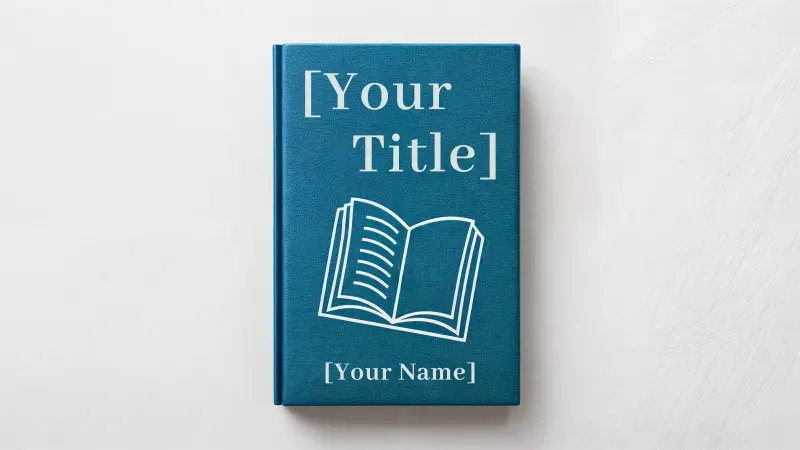A screenplay outline is a scene-by-scene breakdown of a movie. It helps one to turn a logline and premise into a full-fledged story. Let’s first learn the key elements if you don’t know how to write a screenplay outline.
The key elements of a screenplay outline include:
Plot Points and Story Beats:
It comprises inciting incidents, a climax, and a rising action. They play an essential role in making the screenplay attractive.
Scene Descriptions:
These are broad strokes of action reports within one scene.
Character Arcs:
They include emotional hooks for key figures in the script and focus mostly on the main character. You can use Squibler’s Describe tool to create convincing three-dimensional characters with unique goals, flaws, and issues they must face in their story arc.
Dialogue Snippets:
Include critical lines of dialogue to employ when the real scriptwriting begins.
Act Breaks:
Most half-hour television programs use the three-act structure. More than hour-long shows employ a five-act design, and these movies often fall within a three-act frame.
When writing a screenplay, discipline, and organization of character arcs, plot points, and overall story structure are essential factors to consider. Whether you are a professional or amateur screenwriter, learning to delineate a script will surely provide you with an organizational tool for writing the story.
Some screenplay templates that you’ll find are:
General screenplay
Action screenplay
Adventure screenplay
Comedy screenplay
Furthermore, the brainstorming step is where you start organizing your project. To help you out, Squibler has customizable folders for writing effective scripts.
Finally, you can also include team members, minimizing friction with sending the script outline back and forth.

How to Write a Screenplay Outline
Some screenwriting software can give you a step-by-step outline tool to guide you throughout the story development process. These tools can generate a detailed outline based on your input. The outline is typically based on the Three Act Structure or Five Act Structure.
Most of Squibler’s personalized outlines are aligned with the Five Act Structure. You can generate an outline automatically, but if you want to write your outline manually, there are some key factors to remember that will help you to get the most out of the process. These critical steps include:
Begin with a Beat Sheet:
The beat sheet is a condensed version of the overall screenplay. It is longer than a logline but just a few pages long. You can use a beat sheet to jot down broad strokes descriptions of your screenplay’s action and character development.
Move Forward to Index Cards:
Index cards are a concrete way to develop various plotlines in your script. You can use colored index cards to represent multiple narratives you will be looking at in your script.
For instance, you can assign your first story to one color, your second story to a different color, and other narrative threads you want to track in your story. Developing basic-level beats on the cards, which you can arrange sequentially. This strategy helps to understand the story as you create it.
Start Writing a Document, Scene-by-Scene:
Having your beat sheet and index cards as guides prepares you. Your most important goal should be to include every interesting scene in your script. Hence, it would help if you started each outline entry with scene headings like you will do in your actual screenplay.
Explain actions and revelations:
Below every scene heading, describe what happens and what characters and viewers can learn. Outline who takes what steps. Who can understand what information? And most importantly, how do the emotions change for the most relevant characters?
Introduce a Dialogue as it Comes to You:
Even though you aren’t drafting your screenplay yet, you will be forced to start thinking of lines of your discussion as you delineate the plot. When writing your first draft, include your dialogue in the outline and ensure it is clear and detailed.
Use your Outline as an Essential Tool:
Most screenwriters write detailed outlines half the length of a finished script. Some write minimal outlines. They prefer to focus on dialogue and minute action when drafting a scene. However, don’t obsess over your page count. If you’re having trouble outlining your scenes, Squibler’s AI tools, such as Smart Writer, help you flesh out the scene.
To write a screenplay isn’t easy, and an outline is an essential tool for you. Either way, whether you prefer a 20-page or 50-page outline, always know that you’re doing this to make the writing process as smooth as possible.
The Importance of an Outline
Most professional screenwriters prefer creating an outline before writing a screenplay. As your screenwriting profession progresses, you can be asked to give your outline to producers or production company executives before writing a project.
Most industry professionals will inform you that scriptwriting is done in the procedure. You need to ask yourself what an outline is and the practical means to create one. As we have learned, an outline is a scene-by-scene breakdown of the entire story of your screenplay; you need to know it can also be detailed or comprehensive.
In short, the more complex one outline is, the better it will serve you when writing a screenplay. Script breakdown, action, and dialogue allow one to focus on making each scene outstanding and excellent. This approach makes the actual writing of your screenplay easier and more effective.
Have you ever commenced scripting a screenplay only to realize that you have written yourself into a corner or hit some pesky story that you have no idea how to resolve? When you have an outline, you can make as many changes as possible to your account without the pressure of rewriting the actual play.
You are openly free to play with your ideas and get your actual plot points structured correctly without the stress of writing snappy dialogue. If something doesn’t work in your outline, it takes less time and energy to fix it at this point than if you had already written the whole screenplay.
Outlines vary in length depending on the needs of the producer, writer, or production company. If outlining for yourself, you can keep the outline briefer different from that of a studio; the outline should be longer.
FAQs
Here are some common questions related to screenplay outline:
What is a screenplay outline?
A screenplay outline is a detailed blueprint of a film’s narrative, highlighting the main plot points, character arcs, and key scenes. The outlining process helps a professional screenwriter organize the story’s dramatic structure, including the A story and B story. This essential step allows professional writers to craft a cohesive and engaging screenplay efficiently.
What is the format for a screenplay?
The screenplay format follows specific guidelines to ensure clarity and consistency. Key elements include:
Title Page: Film title, writer’s name, and contact information.
Scene Headings: Indicate location and time of day.
Action Lines: Describe the setting and events.
Character Names: Centered and in uppercase before dialogue.
Dialogue: Centered beneath character names.
Parentheticals: Brief instructions for actors.
Using this structured format helps convey a great story effectively in the industry-standard screenplay format.
What is screenplay structure?
Screenplay structure refers to the framework that organizes the narrative into a cohesive form, typically following a three-act structure: setup, confrontation, and resolution. This structure ensures a clear beginning, middle, and end, helping to develop characters and plotlines compellingly. Key elements include the inciting incident, turning points, climax, and denouement, guiding the flow and pacing of the story. In bullet point form, these elements highlight the essential components of screenplay structure.
How to plan a screenplay?
To plan a screenplay, start by brainstorming and outlining the main plot points, including the setup, confrontation, and resolution. Develop character profiles and backstories to ensure depth. Create a detailed scene-by-scene outline to map out the story’s progression. Include key elements such as the inciting incident, turning points, and climax. Finally, review and refine the outline to ensure a cohesive and compelling narrative before beginning the actual scriptwriting.



